
How to Build a Framework?
Interested in learning how to build a framework the right way?
Over the years, the way companies measure the success of a software project has evolved.
As the ever-changing and competitive nature of eCommerce continues to be marked by technology advancements, using traditional metrics such as project completion dates and adherence to forecast budgets no longer suffices.
Now, a project’s ability to accomplish its initial goals has become yet another central indicator of success. As reported by the Project Management Institute (PMI), business projects that are completed on time and on budget while ensuring that the end result matches their objectives have a 92% higher success rate than those who center their metrics exclusively on time and budget.
This is where frameworks come in. This API tool is an integral practice of proper project management that enables a team to organize a project’s dimensions and improve productivity, thus increasing the margin for its success. Whether your project seeks to build settings for Apple (ioS apps), or Android products, frameworks are important.
Building a new framework for product design follows a series of good practices that merge effective, functional, and audience-centered designs with the need for constant testing, iterations, and improvement.
In this article, we will discuss how to create a framework in detail. But, first, we will touch on the importance of creating a framework and a few framework examples. Let's start.
The Importance of Building A Design Framework
One of the most pressing issues that plague modern businesses is their ability to properly structure operations. Too often, enterprises struggle to execute given projects because they lack a clear process that enables them to zoom in on the underlying obstacles that may stunt a project’s development process.
Frameworks take the form of a basic template that aids businesses in solving concrete problems. In doing so, it is an ecosystem of interconnected components, patterns, and elements that act as a simulator, working together to enable enterprises to home in on possible setbacks and efficiently manage projects.

Get a complimentary discovery call and a free ballpark estimate for your project
Trusted by 100x of startups and companies like
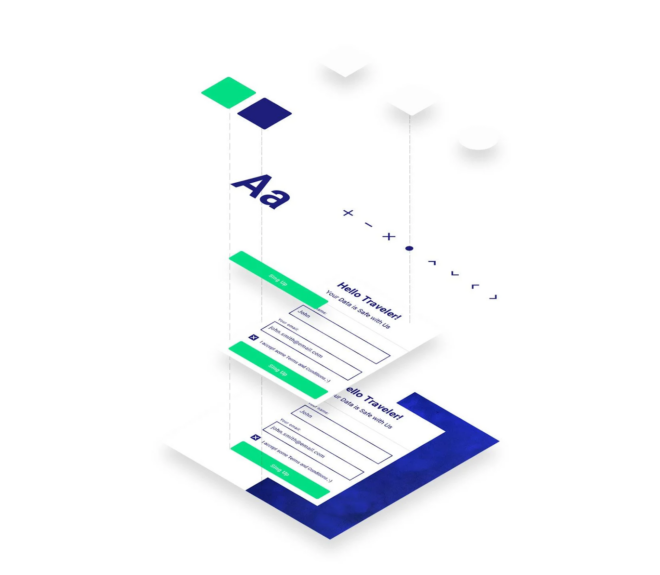
Credits: Toptal
When it comes to product development, a design framework forms the very nexus which joins the facets that make product projects a success. Likewise, correctly integrating frameworks saves the enterprise from unnecessary headaches:
- Product design inconsistencies.
- Poor productivity and communication between product team members.
- Troublesome late design changes.
Let’s take a closer look at how these problems manifest themselves when a framework is not included in a business structure.
Product Design Inconsistencies
Consistency is a fundamental pillar of a stellar design.
When each and every aspect or element of a design is produced with the care to detail that it deserves, it has a massive positive impact on product usability, efficiency, and overall aesthetic appeal. Irrespective of your product’s niche, nature, or purpose, the failure to be consistent throughout its design process may potentially compromise a user’s experience.
Inconsistencies in product design occur when there is improper management usually resulting from the absence of a guide. These situations are most likely to occur at advanced stages in the design process when teams make changes to an existing design on the fly or even during development runtime.
To provide you with an example, a design team usually goes back and forth with project managers, executive management, and stakeholders alike to change details such as colors, icons, or even certain images.
In doing so, the absence of a design framework implies that design teams tend to make multiple changes in a short span of time, altering the original design proposal which, in turn, leaves them without a base to work from.
Credits: Pinterest
Surely, you can imagine how difficult it will be for a design team who has just produced six or seven color variations of a design to recall which one was the primary color used if they don’t have a point of reference.
Ultimately, this brings about confusion which can lead to design mistakes, such as when some designs mistakenly reuse colors that were turned down at earlier stages in the design process.
A design framework reduces the chances that these circumstances become a reality. This is because it provides the design team with a base that serves to remind them of the original design proposal so that they can easily revert to it should the need arise.
Poor Productivity & Internal Communication Challenges
The design process of a product requires the input and involvement of multiple personnel across a myriad of project groups. These include stakeholders, executive management, project managers, team leaders, and of course the members of the design team.
In most cases, these work collaboratively, communicating project ideas and modifications in real time and at various points during the process.
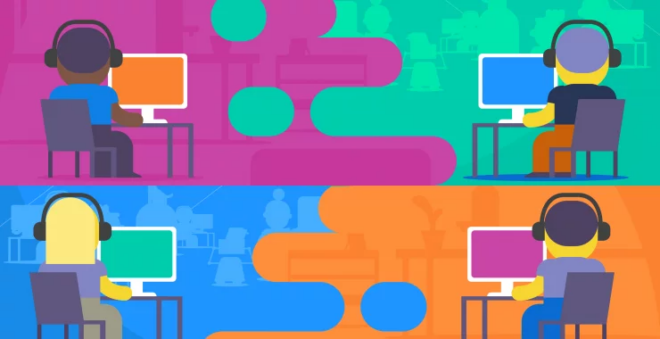
Credits: Chanty
Undoubtedly, the constant cross-exchanging of information can become confusing, especially when these interactions are accompanied by constant mass and minor changes in the design.
When there is no a set of guidelines or standards that a team can follow, this confusion is exacerbated.
Instead, a design framework simplifies how teams interact with each other and propose changes by streamlining the communication process.
Late Design Modifications
No one can avoid change in the design process. After all, it is a necessary activity that leads to product improvement and growth.
However, even change needs to be structured into the product lifecycle in an organized fashion. Unfortunately, the tendency for designers to make innumerable single color or icon changes when hundreds of artboards and components have already been created does not fit into a structured period for change.
These kinds of last-minute changes can throw the entire design project off course as some of them create major domino effects that affect multiple areas of the entire design.
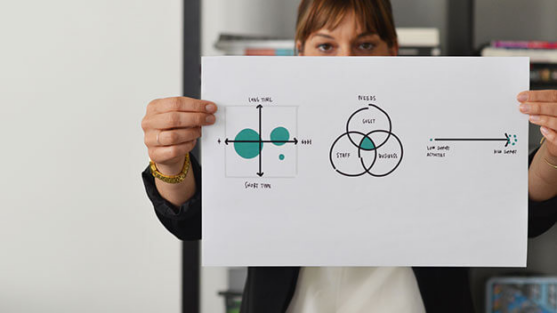
Credits: Salesforce
The object-oriented nature of a design framework provides a visual representation of the design.
In doing so, it also gives the team a better sense of how every change impacts the design as a whole. Consequently, it discourages team members from making sporadic or unnecessary changes, especially when the proposed design is at a mature stage.
Design Thinking & Frameworks
In order to construct a framework, a team needs some sort of insight that they can use to construct a design proposal.
This insight doesn’t fall from the sky. Instead, a design team needs to access data that will assist during the conceptualization phase.
Design thinking is a school of thought that enables a team to retrieve this data and build a design whose primary goal is to resolve the underlying problems presented in a project.
Hire expert developers for your next project
1,200 top developers
us since 2016
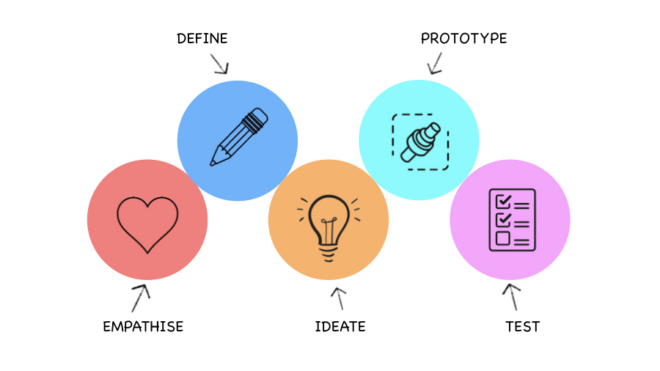
Credits: Open Innovation Community
By doing so, it grants the team the possibility to define a poorly conceptualized or misunderstood business problem to be better able to devise a functional solution.
It is a customer-centric approach to product design that values empathy as a vital step in which a team seeks to gain a bird eye view of a given problem. In doing so, their primary aim is to get an understanding of how people perceive a problem.
This is usually done through some type of user research, be it user observations, detailed surveys distributed to employees, or any other data collection tool that permits you to gain any kind of insight into the problem.
Once that is done, the team then spends time analyzing the information in order to define the parameters surrounding the problem and subsequently ideate an adequate solution.
The exploratory principles of the design thinking model equip the product development team with the necessary base upon which they can flesh out a clear and well-structured framework.
How to Build A Framework?
Having laid out the fundamentals needed for framework designs, let us now turn our attention to how they should be constructed.
A well-done design framework is built on a solid visual hierarchy. This hierarchy dictates the order in which visual elements of a product should be created.
This order is headed by omnipresent components such as color and typography and then proceeded by stylistic components such as buttons and input.
Color Guide
Color is single-handedly the most significant element in the hierarchy of any UI design/web application since it is featured in every design component.
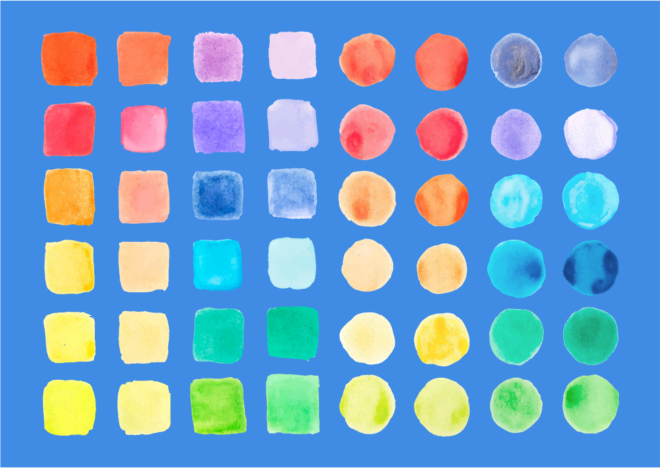
Credits: Marvel App
Color (or its absence) evokes a profound emotional reaction in the minds of your target audience and contributes to the look, feel, image, and branding of a given product. For that reason, it makes sense to begin structuring your hierarchy around what will capture your audience’s eye first.
In doing so, color ought to be divided into three main groups:
- Primary colors: These are the colors that are usually associated with the brand of a product or business. They make up the main color scheme that defines a product and are typically employed in buttons.
- Secondary colors: As the name suggests, these work in tandem with primary colors, complementing the primary palette to create a combination color scheme that makes the design pop. Secondary colors are usually found in backgrounds as well as typography.
- System feedback colors: These colors are used sparingly in product design. They tend to be included in pop-ups such as notifications, alerts, and warnings, among others.
Once you have selected colors, they need to be organized into a grid. These are placeholders that keep design elements in a given space. These grids are either vertical or horizontal in nature.
In practice, vertical grids are more commonly used, with horizontal grids being associated with typography for newspaper designs.
Modifiers
Modifiers are agents which serve to alter, style, or change other components.
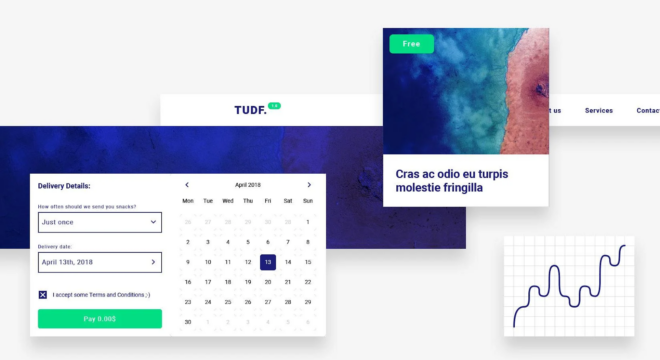
Credits: Toptal
Therefore, they play a significant role in the aesthetic look and feel of a design and deserve their place in a design framework.
Modifiers include design concepts such as shapes and shadows and are commonly featured in background designs, buttons, form fields, and input elements, among others.
Placing modifiers in the design framework immediately after the inclusion of colors and grids, allows the development team to make a seamless transition from user interface concepts to the world of user experience design (UX).
Typography
Typography constitutes the final essential component when drafting up a design framework.
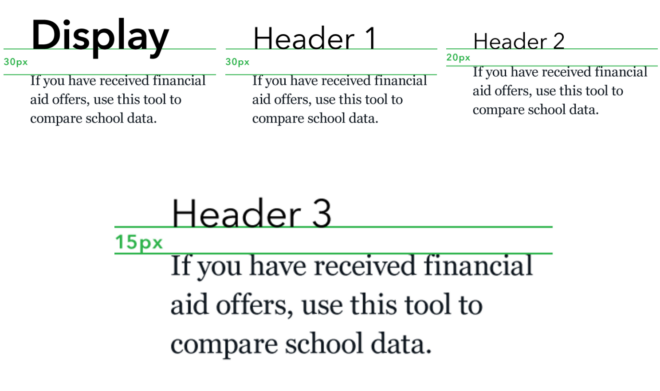
Credits: Medium
On one hand, this involves selecting the font, size, and color text that will appear on the product. Therefore, for website designs, a decision will be made by the development team as to which blocks of text will use which headers (H1s, H2s, and so on).
On the other hand, the inclusion of icons, buttons, messages, and other minute aesthetic features is in turn interwoven in the design framework in accordance with each one’s relationship to typography and the overall design.
Deciding Who Should Design Your Framework
Frameworks are a crucial element to the success of any product project.
However, they also aren't easy to create or manage.
On one hand, it requires immense accountability from the design team. Not only are members required to be methodical in their inclusion of design elements in the framework, but they are also expected to remain disciplined in their ability to adhere to these standards and not deviate from the guidelines.
Hire expert developers for your next project
As mentioned previously, failure to stick to a framework can lead to the downfall of a product’s design.
What’s more, building a framework also demands proficiency in data collection tools and strategies that allow one to adequately qualify the real problems experienced by a business and to, in turn, develop a corresponding solution.
It is clear that creating a framework is a tall order for any design team.
Surprisingly, millions of businesses unknowingly commit the same mistake of entrusting such a highly complex and technically demanding task to freelancers that they come across on job boards and freelance platforms.
This is a recipe for disaster.
For starters, usually, most of the freelancers who offer their services via these platforms have not been subject to any sort of quality control mechanism which validates (or disproves) their skills in software development.
To be more specific, these platforms do not require these freelancers to take a prior test in order to offer their services to businesses. Instead, they are permitted to create profiles and apply for jobs, thus leaving quality assurance and validation up to the recruiter.
This is a highly dangerous practice. Today, there are millions of illegitimate professionals who lead businesses astray by posing as expert software developers when in fact they are not qualified to take on your project.
On occasion, businesses are not able to spot these phoneys during the onboarding process and have to learn the hard way during the course of the project, losing money, time, and resources.
While it is true that not all freelancers are phoneys, danger lurks at every corner of the web. As an enterprise, you cannot afford to jeopardize the well-being and success of your product by aligning with the wrong professionals.
Instead, the smarter thing is to partner with top developers that will maximize your margin for success.
Here’s how.
Hire Top Developers With DevTeam.Space to build a framework
DevTeam.Space is an exclusive members-only vetted community of expert software engineers. For years, our developers have assisted companies across niches and countries worldwide to power up their software projects with the skills, expertise, and professionalism needed to bring them success.
Our development teams have demonstrated through their partnerships with businesses like yours that they deliver winning software products, crafting stunning designs that align with your enterprise’s objectives while meeting the demands, expectations, needs, and particularities of your target audience.
All the developers who form part of this community have been chosen to bear the DevTeam.Space stamp of approval in virtue of their proven experience, unique skill set, technical prowess, and exemplary project management capabilities.
Whether your project needs Javascript, CSS, special framework & libraries/static libraries (UiKit, or XcodeProj from GitHub), Swift, Xcode, or Bootstrap, our developers can handle it.
Businesses who leverage our software developers enjoy the support of an agile AI algorithm that allows teams and individual software engineers alike to seamlessly integrate into your project and grant you everything you need to make this partnership transparent:
- Access weekly reports and daily work overviews that summarize all the achievements, activities, and tasks completed in your project.
- Create milestones that are unique to various phases of your project and keep track of them as the development team goes about completing them.
- Secure a clear and concise overview of your project so you can always be on top of every aspect of your project.
DevTeam.Space is loaded with web development teams and stand-alone engineers who are ready to help you take your own framework to new heights. Level up with a DevTeam.Space developer on your new project and experience world-class project collaborations for the best results out there.
Planning to Build a Framework?
This tutorial breaks down the steps of how to build a framework.
Freelancers can’t build winning design frameworks.
DevTeam.Space software engineers can. For maximum design functionality throughout the build phase, trust in our developers for excellent problem-solving and software development practices.
It only takes a few minutes to complete our DevTeam.Space questionnaire.
Once you do, one of our account managers will reach out to you as soon as possible.
Frequently Asked Questions on How to Build a Framework
Web application systems, GUI systems, etc. are examples of a framework. Developers build a framework to define the concept of a software application.
Yes, you can build a framework if you have the required expertise like taking architectural decisions, coding decisions, etc. If you do not have the experience and skills, then it is better to partner with the professionals like those available at DevTeam.Space.
Start by studying existing frameworks to solve particular problems, and create small focused frameworks. Allow the client to participate in the process to create a framework effectively. Build a framework iteratively and through prototyping.


